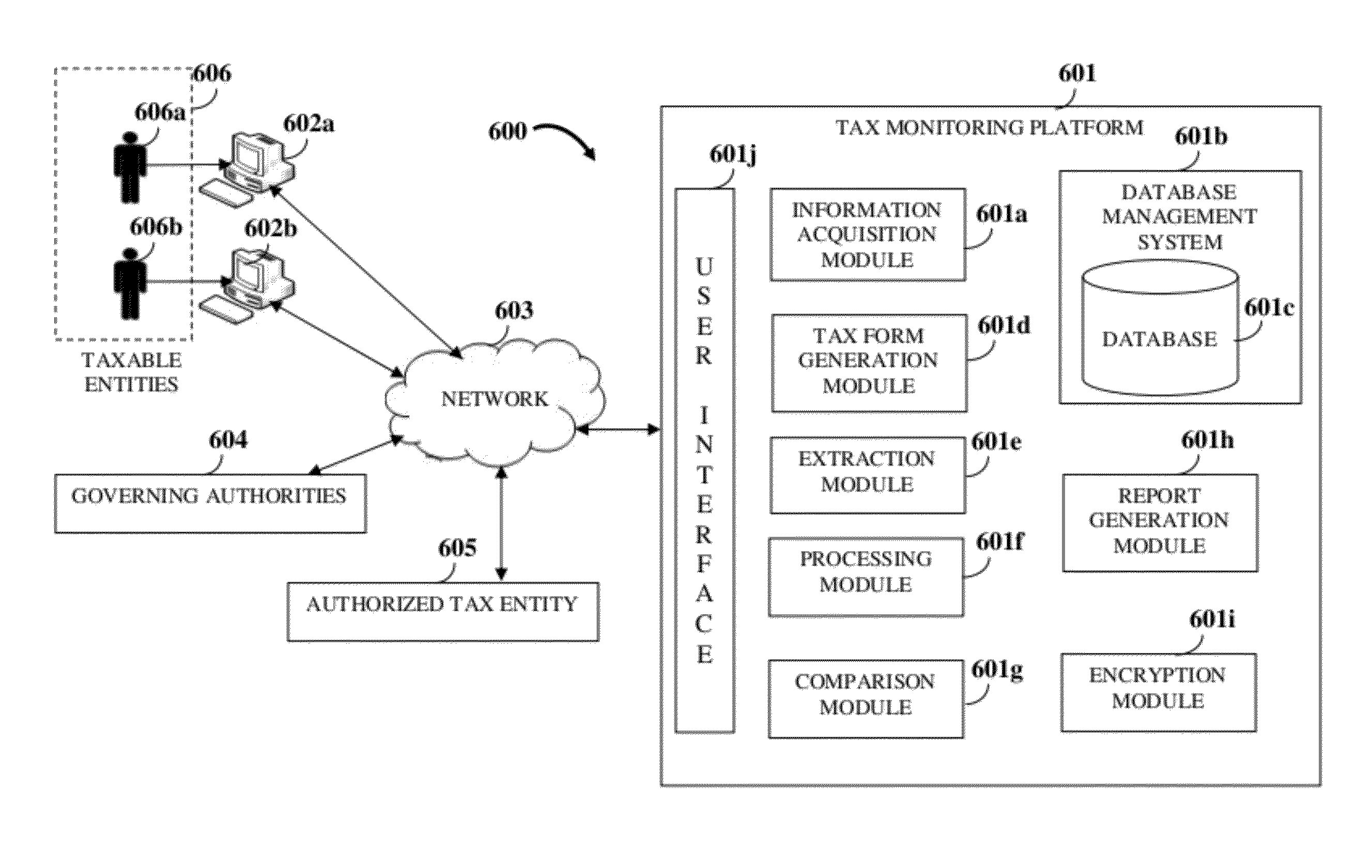Tax Liability And Deductions Verification System
a verification system and tax liability technology, applied in the field of computer implemented methods and systems, can solve the problems of not providing sufficient information for individual tax payers and businesses, not reporting all their taxable income, and not easily obtaining the information required to verify some of the information
- Summary
- Abstract
- Description
- Claims
- Application Information
AI Technical Summary
Benefits of technology
Problems solved by technology
Method used
Image
Examples
example a
[0062]John Smith is a landlord that owns a single family four bedroom house. To maximize profits, Mr. Smith has decided to illegally convert the single family house into a multi-family dwelling. The basement is converted into one apartment and the attic is converted into another apartment. Even though the house is on the property tax rolls as a single family house, Mr. Smith decides to disobey the zoning laws and not obtain the proper permits.
[0063]When Mr. Smith files tax returns for this rental property, Mr. Smith continues to declare that the house is a single family dwelling. Since Mr. Smith knows that it is highly unlikely that tax collection agencies ask tenants the amount of rent that is paid, Mr. Smith may not report the entire amount of rental income. On Mr. Smith's tax return, Mr. Smith has reported that the annual rental income for this property is $14,400. In this area, the tax collection agencies know that this is about how much the annual rental income is for a single ...
example b
[0066]Consider an example where Mr. John Smith owns a multi-family house that has three apartments. Mr. John Smith rents apartment A to the unmarried couple Scott Williams and Ann Jones for $1200 per month. Mr. John Smith rents apartment B to Adam Wright for $900 per month. Mr. John Smith rents apartment C to Robert Cox for $1000. When Mr. John Smith rents each apartment, Mr. John Smith files this information with the internal revenue service (IRS). On Mr. John Smith's tax return, he reports the annual rental income of $37,200. On Mr. Scott Williams' tax return, Mr. Scott Williams reports that he paid Mr. John Smith $450 per month. On Ms. Ann Jones' tax return, Ms. Ann Jones reported that she paid $450 per month to Mr. John Smith. On Mr. Adam Wright's tax return, Mr. Adam Wright reports that Mr. Adam Wright paid Mr. John Smith $900 per month.
[0067]Assume that Mr. Robert Cox fails to file a tax return. Since Mr. John Smith reported Mr. Robert Cox as a tenant for a specific time perio...
example c
[0068]John Smith owns a single family home that he plans to rent to tenants. John Smith hires a vendor, for example, AAA Contractors to renovate the kitchen for $30,000. As part of the deal, AAA Contractors tells Mr. John Smith that he can save some money by paying $20,000 by check and $10,000 in cash. The reason for accepting part of the payment in cash is for AAA Contractors to attempt to hide this revenue from tax collection agencies. Since Mr. Smith is having this work done, Mr. Smith decides to claim additional work was done in the bathroom for $15,000 by a fictitious company known as Bath Works. Mr. Smith generates phony receipts for Bath Works and Mr. Smith claims that he did not know that the company was not legitimate. When Mr. Smith, the landlord, files tax returns, Mr. Smith has to associate the total payments for AAA Contractors and Bath Works with the appropriate unique identification numbers. Also, AAA Contractors will indicate on their tax returns that AAA Contractors...
PUM
 Login to View More
Login to View More Abstract
Description
Claims
Application Information
 Login to View More
Login to View More - R&D
- Intellectual Property
- Life Sciences
- Materials
- Tech Scout
- Unparalleled Data Quality
- Higher Quality Content
- 60% Fewer Hallucinations
Browse by: Latest US Patents, China's latest patents, Technical Efficacy Thesaurus, Application Domain, Technology Topic, Popular Technical Reports.
© 2025 PatSnap. All rights reserved.Legal|Privacy policy|Modern Slavery Act Transparency Statement|Sitemap|About US| Contact US: help@patsnap.com



